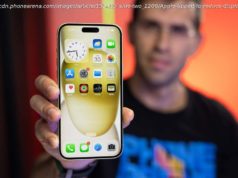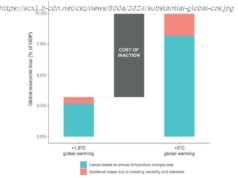Huawei just announced the Mate 10 and Mate 10 Pro smartphones this morning. That’s right—like other premium phone vendors, Huawei is doing…
Huawei just announced the Mate 10 and Mate 10 Pro smartphones this morning. That’s right—like other premium phone vendors, Huawei is doing the “dual flagships” thing. Although the Mate 10 and Mate 10 Pro are similar in many ways, the “Pro” model isn’t strictly a clear upgrade from the standard model. Both phones have Kirin 970 SoCs, 4,000 mAh batteries, dual rear cameras, and “almost borderless” screens. The Kirin SoC inside the handsets is accompanied by a dedicated AI processor.
The four colors of the Mate 10.
The screens are different on either model, though. The regular Mate 10 has a 5.9″ LCD with 2560×1440 resolution and a RGBW-LED backlight that can shine at up to 730 cd/m². That brightness level should help with daytime reading. Meanwhile, the Mate 10 Pro has a 6″ 2160×1080 AMOLED with a 70,000:1 contrast ratio and that Huawei says can reproduce 112% of the NTSC color space. The company says the displays on both handsets can play back HDR10 video, too.
This is the Tech Report, so it wouldn’t be right if we didn’t talk up the SoC inside these phones. Huawei actually announced the Kirin 970 SoC at IFA last month. The chip packs eight CPU cores in a big. LITTLE configuration, with four Cortex-A73s doing the heavy lifting and four Cortex-A53s keeping the pace otherwise. Graphics horsepower comes by way of a 12-core ARM Mali-G72 GPU. Neither of those are the most interesting bit about the Kirin 970, though. The real juicy news is about the phone’s integrated AI processor.
Huawei Mate 10 (top) and Mate 10 Pro (bottom)
The Kirin 970’s dedicated AI processor is called the Neural-Network Processing Unit, apparently abbreviated “NPU.” Anandtech got some details on the processor at IFA last month. The silicon is seemingly similar in design to the tensor cores in Nvidia’s Volta GPUs, although it can only be used for AI inferencing (task execution, as opposed to training). Huawei says the NPU can crunch a very impressive 1.92 TFLOPs of FP16 compute.
Of course, all that power is worthless without software to make use of it. Like other AI-compute-enabled phones, the Mate 10s will primarily use their accelerators for improved photography, at least at launch. Huawei says the dual-sensor rear camera was designed in collaboration with Leica, and that it has the world’s largest aperture for a smartphone camera, at f/1.6. The system combines a 20-MP monochrome sensor with a 12-MP RGB sensor, and uses optical image stabilization along with AI software that can intelligently adjust photo parameters based on the type of subject being captured.
Like the Galaxy S8 before it, the Mate 10 and Mate 10 Pro can be used like a conventional PC. Unlike the S8, though, the new Huawei phones don’t require a specific dock to enable “PC mode.” Simply hook up a monitor with support for DisplayPort Alternate Mode to the phones’ USB Type-C port, pair your Bluetooth peripherals, and away you go. You can use both displays simultaneously, and phone-specific tasks like calls and texts stay on the phone. This is the feature I find most exciting about the new device as it could really obsolete a lot of other types of portable computers.
The phone has a few other features to be excited about. The Mate 10 retains its headphone jack, although the Mate 10 Pro does away with it. The bigger handset does include a headphone adapter in the box, though. Both phones have dual-SIM support, and fully support LTE on both cards simultaneously. The phones differ in their storage and RAM allotments, too: the Mate 10 Pro comes with 128 GB of storage and 6 GB of LPDDR4 memory, while the regular Mate 10 “only” gets 64 GB of storage and 4 GB of RAM.
The four colors of the Mate 10 Pro.
There’s also a Porsche Design version of the Mate 10 coming out, similar to that of the Mate 9. Dr. Jan Becker of Porsche Design said on stage this morning that the logo-bedecked version of the Mate 9 was completely sold out. The Porsche Design take on the Mate 10 will be functionally similar to the Mate 10 Pro, but will have 256 GB of storage and a customized interface.
Although recent Huawei handsets are available unlocked in the US, there’s yet no word if a stateside carrier will pick up the Mate 10s, though we hope one of the big four will offer them. Huawei says that the Mate 10 will run buyers €699 (roughly $688 without VAT) when it arrives in Mocha Brown, Black, Champagne Gold, and Pink Gold later this month. Its bigger sibling the Mate 10 Pro will run €799 (about $787) in Midnight Blue, Titanium Gray, Mocha Brown, and Pink Gold. If you’re after that Porsche Design version, it’ll run you a bit more at €1349 (or $1328).






